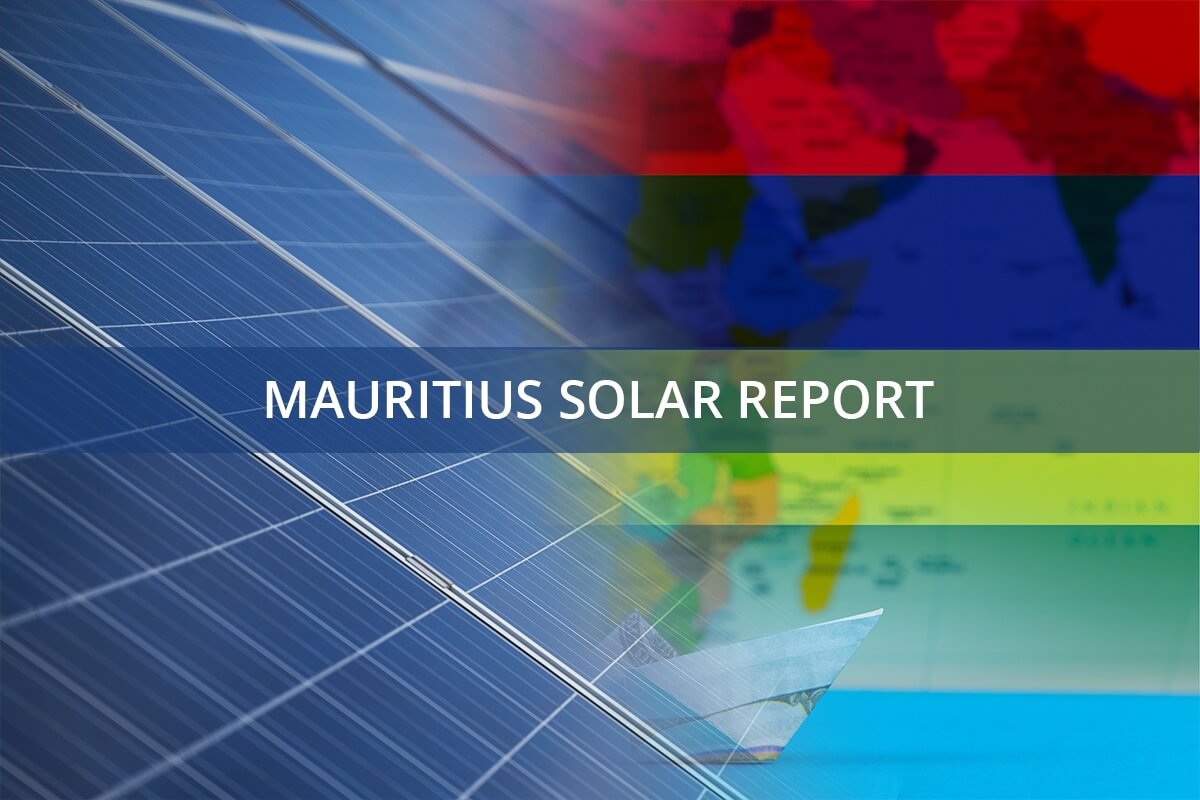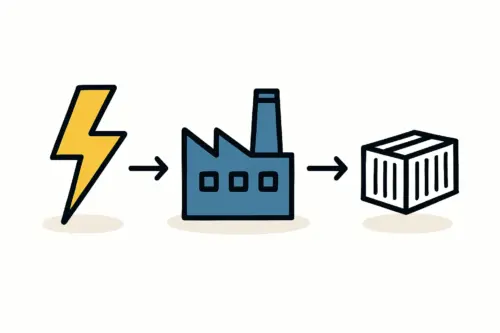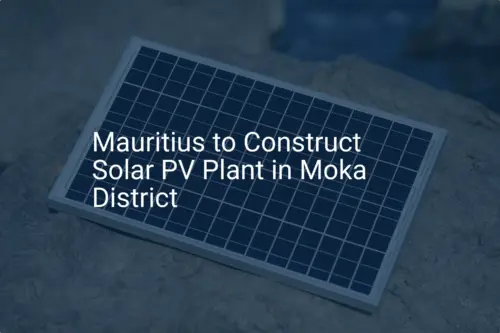An investor’s business plan is only as strong as its underlying assumptions. While estimating capital expenditures for machinery is relatively straightforward, projecting operational costs—particularly utilities—requires a much deeper, localized analysis. For an entrepreneur considering a solar module manufacturing plant in Mauritius, a surface-level estimate for electricity and water can lead to significant financial miscalculations. The true cost lies not in a national average but in the detailed tariff structures of local utility providers.
This article examines the critical utility factors for establishing a solar manufacturing facility in Mauritius. It moves beyond generalities to explore the specific electricity tariffs, water costs, and grid reliability metrics that directly impact a factory’s profitability. Understanding these details is fundamental to building a robust and realistic financial model for solar manufacturing.
Understanding Industrial Electricity Tariffs in Mauritius
The primary provider of electricity in Mauritius is the Central Electricity Board (CEB). For industrial consumers, the CEB uses a multi-part tariff structure; understanding it is crucial for accurate cost forecasting. This is not a simple flat rate per kilowatt-hour (kWh).
Key Components of the CEB Industrial Tariff
An industrial electricity bill typically consists of two main charges: a demand charge and an energy charge.
-
Demand Charge (kVAh): This fee is based on the highest peak power your factory draws from the grid during a billing period, measured in kilovolt-ampere hours (kVAh). It is designed to cover the cost of the infrastructure required to meet that peak demand. For a solar module factory, high-demand processes like laminator heating cycles or stringer machine start-ups will directly influence this charge. Careful planning to stagger the operation of heavy machinery can help manage and reduce this component of the bill.
-
Energy Charge (kWh): This is the more familiar charge based on the total amount of electricity consumed over the billing period, measured in kilowatt-hours (kWh). However, the CEB uses a Time-of-Use (TOU) system, meaning the price per kWh varies depending on the time of day.
Time-of-Use (TOU) Tariffs: A Critical Factor
The TOU tariff structure is designed to encourage consumers to shift their energy use away from peak hours, thereby reducing strain on the national grid. The rates are typically divided into three periods:
-
Peak Hours (e.g., 6 PM – 9 PM): Electricity is most expensive during this period. Running energy-intensive machinery at this time significantly increases operational costs.
-
Standard Hours: A moderate rate applies during normal business hours.
-
Off-Peak Hours (e.g., 10 PM – 6 AM): Electricity is cheapest during these hours.
Ready to make big Profits?
The solar Industry is Booming
WE HELP NEWCOMERS to the solar industry start their own solar module production line. Customers can make BIG PROFITS by selling modules and finding investors, without wasting money and time on things they don't need!
For a solar factory, this structure presents both a challenge and an opportunity. A production schedule that runs lamination cycles or other high-consumption processes during off-peak hours can lead to substantial cost savings. This strategic energy management is a key consideration when planning production workflows for a new turnkey solar panel production line.
Experience from J.v.G. turnkey projects confirms that accurate forecasting requires modeling production schedules against these specific TOU rates rather than relying on a blended average.
Grid Stability and Renewable Energy Integration
The reliability of the power supply is non-negotiable for a continuous manufacturing process. An unexpected power outage can lead to production stoppages, material waste—such as a batch of modules halfway through lamination—and costly downtime.
Mauritius’s Evolving Energy Landscape
Mauritius has historically relied on imported fossil fuels like heavy fuel oil and coal for most of its electricity generation. However, the government has set ambitious targets to increase the share of renewable energy in its mix, primarily from solar, wind, and bagasse (a byproduct of sugar cane processing).
This transition is positive for sustainability but introduces challenges related to grid stability. Integrating intermittent renewable sources like solar requires a modern, resilient grid. The CEB is actively investing in grid modernization, including smart grid technologies and energy storage solutions, to ensure reliability.
Business Implications of Grid Performance
This has two key implications for a prospective factory owner:
-
Due Diligence is Essential: While the grid is generally reliable in industrial zones, investigating the historical performance of the specific feeder line for a proposed factory location is a prudent step.
-
Backup Power Consideration: Depending on the site’s grid reliability and the financial cost of a production halt, investing in a backup power source, such as a diesel generator, may be a necessary risk mitigation measure. This adds to the initial capital investment but can safeguard against much larger operational losses. The pvknowhow.com e-course offers structured modules to help investors weigh these types of risk-versus-cost decisions.
Water Access and Cost Analysis
Water is another essential utility for a solar module manufacturing plant. Its primary uses include:
-
Module Washing: Cleaning finished modules is a critical quality control step.
-
Cooling Systems: Certain machinery may require water for cooling.
-
Domestic Use: For employees in washrooms and canteens.
The Central Water Authority (CWA) manages the water supply in Mauritius. Similar to the electricity model, industrial consumers are subject to specific tariffs.
CWA Industrial Water Tariffs
The CWA typically uses a volumetric tariff, where the price per cubic meter increases as consumption rises. Although water costs represent a smaller portion of operational expenditure compared to electricity, they must be accurately budgeted.
Water availability can also be a concern in certain regions, particularly during dry seasons. The selection of a factory site must include an assessment of the local water infrastructure’s capacity and reliability—a key component of the overall analysis of factory building requirements. Investing in on-site water storage tanks can provide a buffer against potential supply interruptions.
Frequently Asked Questions (FAQ)
What are the main components of an industrial electricity bill in Mauritius?
The bill primarily consists of a demand charge (based on your peak power usage in kVAh) and an energy charge (based on your total consumption in kWh). The energy charge is subject to Time-of-Use rates, meaning the cost per kWh varies between peak, standard, and off-peak hours.
How reliable is the electrical grid for manufacturing in Mauritius?
The grid is generally considered reliable, especially in designated industrial zones. However, as the country integrates more intermittent renewable energy sources, localized or momentary disruptions can occur. A site-specific assessment of grid performance and consideration of backup power systems is recommended.
Is a backup generator a necessary investment?
This depends on a risk analysis. A manufacturer must calculate the potential financial loss from a production stoppage—wasted materials, labor costs, delayed shipments—and compare it to the capital and operating cost of a backup generator. For many continuous manufacturing processes, it is a prudent investment.
What is the approximate cost of water for a small-scale solar factory?
Water costs are significantly lower than electricity costs but are not negligible. The cost is based on a volumetric tariff from the CWA. For a 20–50 MW factory, this cost would be a manageable but necessary line item in the operational budget, dependent on the efficiency of water use in washing and cooling processes.
How can a factory owner optimize utility costs?
The primary method for optimizing electricity costs is to shift energy-intensive operations, such as lamination, to off-peak hours when the kWh rate is lowest. Investing in energy-efficient machinery and performing regular maintenance can also lead to significant savings on both electricity and water consumption over the long term.









